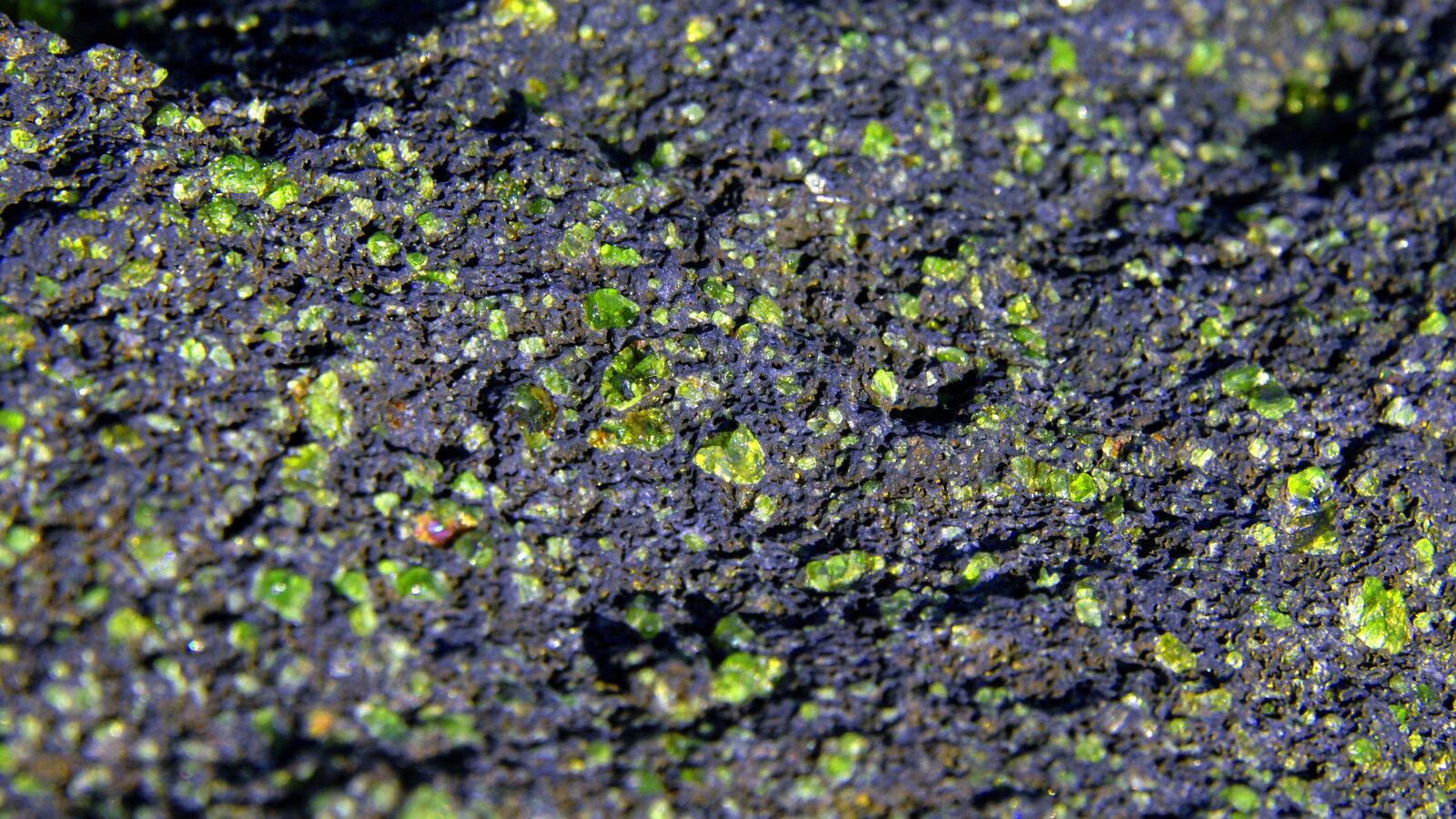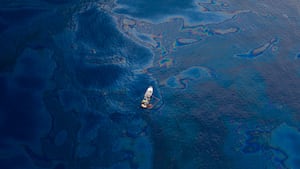When the Paris Agreement was inked in 2015, 195 nations (including the United States) committed to curb global warming to a maximum of 1.5-2º Celsius higher than pre-industrial levels. It’s an uphill battle to get every nation to fulfill its role, and even if they pull through we’ll still face major environmental consequences, like a decline in most of the world’s coral reefs and lower crop yields. But if we can stick to this goal, we may yet avoid the worst disasters.
So all hands are on deck to reduce carbon emissions and strip the atmosphere of its excess greenhouse gases—and that means no solution is being ignored. One emerging method of carbon removal that’s especially gaining interest is inspired by Earth’s green beaches. That’s not an eco-friendly euphemism—we’re talking about literal green beaches.
More specifically, we’re talking about harnessing the carbon-capturing power of green-colored olivine crystals. Olivine is one of the most common minerals on Earth. It absorbs carbon dioxide through a chemical reaction similar to the rusting of iron metals—except that instead of iron + water + oxygen = rust, the reaction goes olivine + carbon dioxide + water = silicate + calcium carbonate + magnesium ions. That makes olivine a natural air purifier, sucking carbon dioxide out of the sky and ocean and locking it up in harmless products that can form things like coral reefs.
There are over a trillion tons of olivine available, found largely in Earth's mantle. Volcanic eruptions bring it to the surface, and these green crystals can help form some natural green beaches. There are, in fact, four such beaches in the world, found in Hawaii, Ecuador, Guam, and Norway.

In these locations, olivine is helping counter climate change—albeit slowly, on geological timescales. Some scientists think we may be able to dramatically scale up this natural process as a carbon capture solution called enhanced mineral weathering. An organization called Project Vesta aims to prove it outright, with a plan to deploy olivine sand in the water along one beach in the Northern Caribbean and determine how effectively the olivine captures carbon.
Research has shown that this method works best when the olivine particles are small and kept in motion. The natural wave action on the coast can churn the olivine sand and grind it into even smaller bits, which should maximize how much carbon dioxide the process can remove. Preliminary studies suggest this method could help make a serious dent in our carbon emissions.
“According to our analysis, we could remove a billion tons of carbon dioxide using less than 0.25 percent of the world's coastal waters,” Project Vesta CEO Tom Green told The Daily Beast. “That would be an enormous contribution toward our climate goals—far larger than any other carbon dioxide removal solution currently available.”
The benefits wouldn’t stop there. When enhanced weathering occurs in coastal waters, it can also reduce ocean acidification. The ocean has been absorbing most of the excess heat trapped by greenhouse gases, reducing it by about 93 percent in the last 50 years. That comes at a major cost because when the ocean absorbs carbon dioxide it becomes more acidic, which makes it difficult for some animals to build shells or skeletons and can kill coral reefs. The effects ripple throughout these organisms' ecosystems.

Olivine found in New Zealand.
Education Images/Universal Images Group via Getty ImagesIf Project Vesta collects data showing that enhanced weathering helps deacidify the ocean, then scaling up the process could protect entire species of marine animals (including the fish and shellfish that sustain so much of the world’s food supply) and preserve coral reefs that act as storm breakers to protect coastal infrastructure, all while countering human carbon emissions that are harming terrestrial environments, too.
Project Vesta’s calculations propose collecting a billion tons of naturally made olivine sand every year, and distributing it over about 28,000 miles of coastline. The National Academies of Science, Engineering, and Medicine estimates that this process could actually be scaled up even further to suck up more than 1 gigaton of carbon dioxide annually.
But decades of research and theoretical models don’t sway people into investing time and money into these types of projects—results do. Hence the reason so many people are watching Project Vesta’s trial with keen interest.
“Moving from theories on paper to real world experiments is a key part of the puzzle, offering the opportunity to assess how well the method truly works,” Rosalind Rickaby, a professor of biogeochemistry at Oxford University, told The Daily Beast. “Putting it into practice is so important because no matter how the results come out, we’ll have narrowed the pathway forward by giving enhanced weathering a scientifically demonstrated green or red light.”
There are many different ways to enhance weathering. Rickaby's research, which involves assessing enhanced weathering in different terrains as part of a consortium funded by the UK Research and Innovation, aims to determine the security of carbon dioxide storage via this method. It also focuses on potential side effects from the ions that are released in the process. Early results from the consortium are encouraging, and even suggest the ions could help replenish ion-depleted environments in the ocean and in agricultural soil, improving plant and algae growth. Project Vesta also says that the process appears to be ecologically safe based on preliminary toxicology data.
Enhanced weathering is only one of several carbon capturing methods currently in development—all of which will still be worth pursuing regardless of Project Vesta’s results. “We will likely need a cocktail of approaches to safely engineer our way out of the climate crisis,” Rickaby said. “Using any one of them on a global scale will probably have negative side effects, so deploying several methods at moderate levels seems to be a safer approach.”
Given the state of our planet, we don't have time to try one solution at a time anyway. Pursuing multiple carbon removal technologies, including enhanced weathering, in tandem offers our best chance to heal the Earth.







